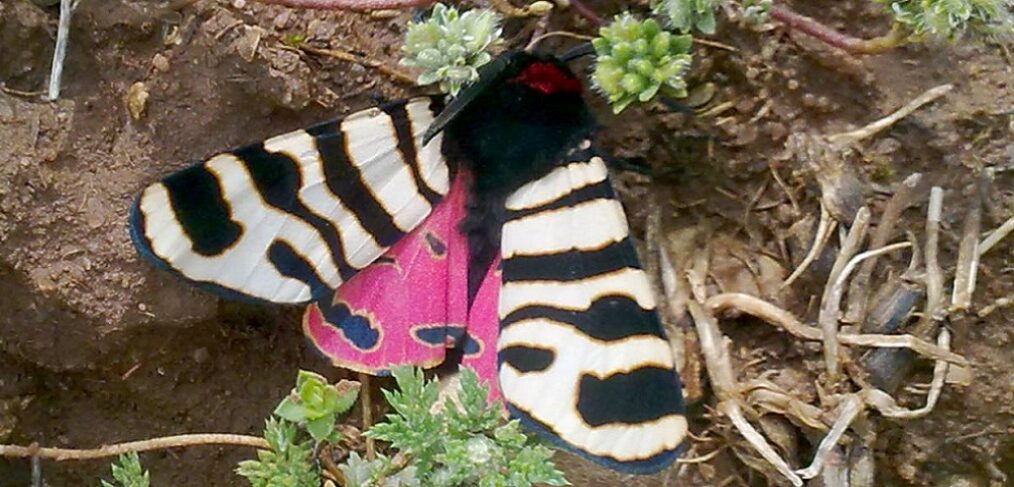
species of the week # 47 – hebe tiger moth
The tiger moth subfamily is named for its particularly fuzzy-haired caterpillars. The caterpillar of the hebe tiger moth curls up in a state of shock and then resembles the spiny cover of sweet chestnuts. The particularly conspicuous moth can now only be observed in southern Europe.
|
Distribution status |
Extinct in Germany |
| Remaining deposits | local in southern Europe, especially around Delphi, Greece |
| Last sightin in rhineland-palatinate | 1914 near Gau-Algesheim |
| Habitat | sandy or calcareous soils, steppes |
| Threat | habitat loss |
The hebe tiger moth reaches a wingspan of 45 to 60 millimeters. It has white, brown-yellow fringed forewings, on which several, partly interrupted black cross bands can be seen. The bright red to pink hindwings are characteristic. The antennae of males are crested, while those of females are slightly serrate. The females are also thicker and appear more ponderous in flight than the males.
They occur locally in southern Europe in sunny and warm areas on sandy or calcareous soils. The hebe tiger moth flies from late April to July and feeds on low herbs, e.g. dandelion, thyme, plantain. The caterpillars have a feeding or resting period not only in winter but also in summer, as an adaptation to the hot habitats. They often need only a short time after hibernation to become fully grown and sometimes pupate in a white-grey soft web on the ground as early as March.
In Germany, the hebe tiger moth has not been sighted since the 1970s. The last time it was found was in 1977 near Stendal in the Spreewald. It used to be widespread in Central Europe. However, as a result of habitat destruction, this species has already become extinct in our country. The preferred habitats have been put to a more monetarily sensible use as “useless wasteland” (forestry and agriculture, overbuilding). However, other negative factors have not been secured.
Policy Need:
– Preserve and restore lean sites and wastelands.
– Promotion of biodiversity research
to further species of the week here
Image: By Carlos Bartolomé La Huerta – Own work, CC BY-SA 3.0, https://commons.wikimedia.org/w/index.php?curid=15145228
